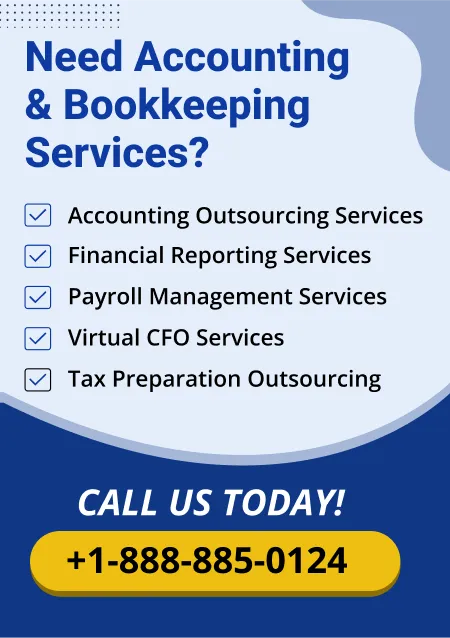Keeping vigil over financial metrics is a crucial task for small businesses. These barometers highlight the financial stance of your business that makes you future-ready, control expansion well and avoid situations of quandary. The complexity of handling your finances increases as your organization expands. One can distinguish between sustainable expansion and financial strain by focusing on the appropriate financial metrics. In order to ensure that your growth is not just quick but also steady and lucrative, this article explores the crucial financial parameters that small business owners should monitor when scaling.
Revenue Growth Rate: Counting the vibrations of expansion
One of the most important measures for growing a firm is the revenue growth rate. It shows you how quickly your revenue is growing over time, which is a direct reflection of the performance of your company and the demand in the market.
- Why It Matters: One indication that your company is growing well is a steady and robust rate of revenue increase. It proves the success of your marketing tactics and determines the first-rate quality of the goods/services you sell.
- How to Measure: Revenue growth rate can be determined by simple maths. First minus the initial revenue and final revenues from each other and then divide the solution by the initial revenue. Now multiply the final answer with 100 and the result gives you Revenue growth rate(RGR).
- When to Act: Revenue growth rate can be downtrend due to operational inefficiency, market saturation or below-par marketing campaigns .It's critical to identify the root reason and implement solutions.
Gross Profit Margin: Ensuring Profitability for your small business
An important metric to follow through is gross profit margin. It determines how competently you are earning profit and selling goods/services in the market. It comprises part of the revenue which is considerable compared to cost of goods sold (COGS).
- Why It Matters: A well managed growth profit margin is essential to ensure profit percentage and pay operating expenses. As your company grows, the growth profit margin also expands ensuring it can meet the high operational needs without defaulting.
- How to Measure: Calculating the gross profit margin is just a game of equations. Simply minus COGS from revenue. Then divide the result by revenue and finally multiply the solution by 100.
- When to Act: If the growth profit margin of your business declines significantly, then you need to pay attention to internal faulty systems like supply chain inefficiency, growing production cost or pricing problems. To preserve profitability, take quick action to resolve these problems.
Cash Flow: Liquidifying Your Business
Operating cash flow is a metric that quantifies the amount of money your company makes from its main activities after deducting investments or outside funding. It's a vital sign of how well your company can keep up its cash flow and finance ongoing operations.
- Why It Matters: If your company has positive operating cash flow, it can pay its bills without needing outside funding. It's essential for future application and determines the fiscal stance your business stands in.
- How to Measure: Operating cash flow can be found by looking at your company's cash flow statement. It is computed by deducting working capital fluctuations, markdowns, and other non-cash charges from net revenue.
- When to Act: It may indicate that your company is having trouble making enough money from its main activities if your operating cash flow is negative. This can lead to reevaluating your pricing systems, cutting off avoidable expenses etc .
Customer Acquisition Cost (CAC): Evaluating the Cost of Your business Growth
The customer acquisition cost is the total cost of bringing in a new customer, including marketing, sales, and other associated costs (CAC). It's a crucial statistic how well implemented your growth initiatives are.
- Why It Matters: Retaining profitability during scaling requires controlling CAC. The sales percentage and the marketing tactics implemented by your business might not stand out and may add-on competetion.
- How to Measure: To calculate the Customer Acquisition Cost (CAC), divide the overall cost of new client acquisition by the total number of new clients acquired during a predetermined time frame.
- When to Act: It's critical to evaluate your marketing and sales tactics if your CAC is upscaling. To make your business have more economical options, improve your marketing campaigns, increase customer targeting, or streamline your sales process.
Lifetime Value of a Customer (LTV): Augmenting Long-Term Revenue
The Lifetime Value, or LTV, metric helps you estimate the total revenue potential of a client throughout their relationship with your business. It works as a tactic to determine whether the client will be working long-term with your business.
- Why It Matters: The prolonged loyalty of consumers and their propensity to spend more money make it highly probable that your business, if it succeeds to achieve more LTV than CAC will experience sustained growth and profitability.
- How to Measure: Calculate LTV by multiplying the average purchase value, purchase frequency, and customer lifespan.
- When to Act: Having a loyal customer base for your business works like a charm. To serve them a more personalized experience, businesses can enhance customer service, implement loyalty programs etc.
Burn Rate: Monitoring Cash Flow to ensure your business is sustainable
The term "burn rate" describes the rate at which a company depletes its cash reserves. It works as a crucial indicator that determines the life breath of your business. It ensures your business is on wheels before requiring more investments.
- Why It Matters: During times of significant expansion, controlling cash flow requires an understanding of your burn rate. It assures the continuous spree of your development until you turn a profit or manage new sources of income..
- How to Measure: When you deduct the monthly operating expenses from the monthly operating income, the resulting burn rate reveals whether your business has hit the lottery or maybe is in need of a bank.
- When to Act: To avoid cash flow mix-up, it your business should look for ways to reduce expenses, generate income or manage further funding to mitigate burn rate.
Debt-to-Equity Ratio: Balancing Financing Strategies
This ratio, known as the debt-to-equity ratio, expresses how much debt compared to equity a company has. It is an important indicator of financial leverage and the degree of risk connected to a firm's capital structure.
- Why It Matters: When the debt-to-equity ratio is high, it implies heavy reliance on debt to fund business expansion, which can throw you in hot-waters if not properly managed. Conversely, a low ratio may imply underutilization of of funds for business growth.
- How to Measure: Calculate the debt-to-equity ratio by dividing total liabilities by shareholders’ equity.
- When to Act: Balancing the weights between debt and equity funding is hard work. It minimizes financial risk and fosters sustainable growth, so it’s worth giving a shot to options like reducing your debt or exploring better equity financing solutions.
Net Profit Margin: Gauging Overall Profitability
After deducting all costs, expenses, and taxes, the proportion of income left over is known as the net profit margin. It's an important indicator for evaluating your company's overall profitability.
- Why It Matters: A high net profit margin is a sign that your company is expanding profitably as well as growing. It demonstrates how well you're controlling expenses while bringing in a solid profit.
- How to Measure: Calculate the net profit margin by dividing net profit by total revenue and multiplying by 100 to get a percentage.
- When to Act: Finding opportunities to cut expenses or boost income is crucial if your net profit margin is dropping. This can entail enhancing operational effectiveness, refining supplier agreements, or optimizing price tactics.
Bottom Line
Lastly, careful observation of critical financial data is necessary for efficiently growing your small firm. Your business can aim for achieving bolder goals and ensure growth by operating cash flow, gross profit margin, and sales growth. Updating these indicators as a to-do-list routinely will help in long-term success and stability in your business. Furthermore, it will clarify your vision to take informed decisions and detect pitfalls from miles away and be cautious early.
Read Also 10 Financial Ratios Every Small Business Owner Should Know and Use

























